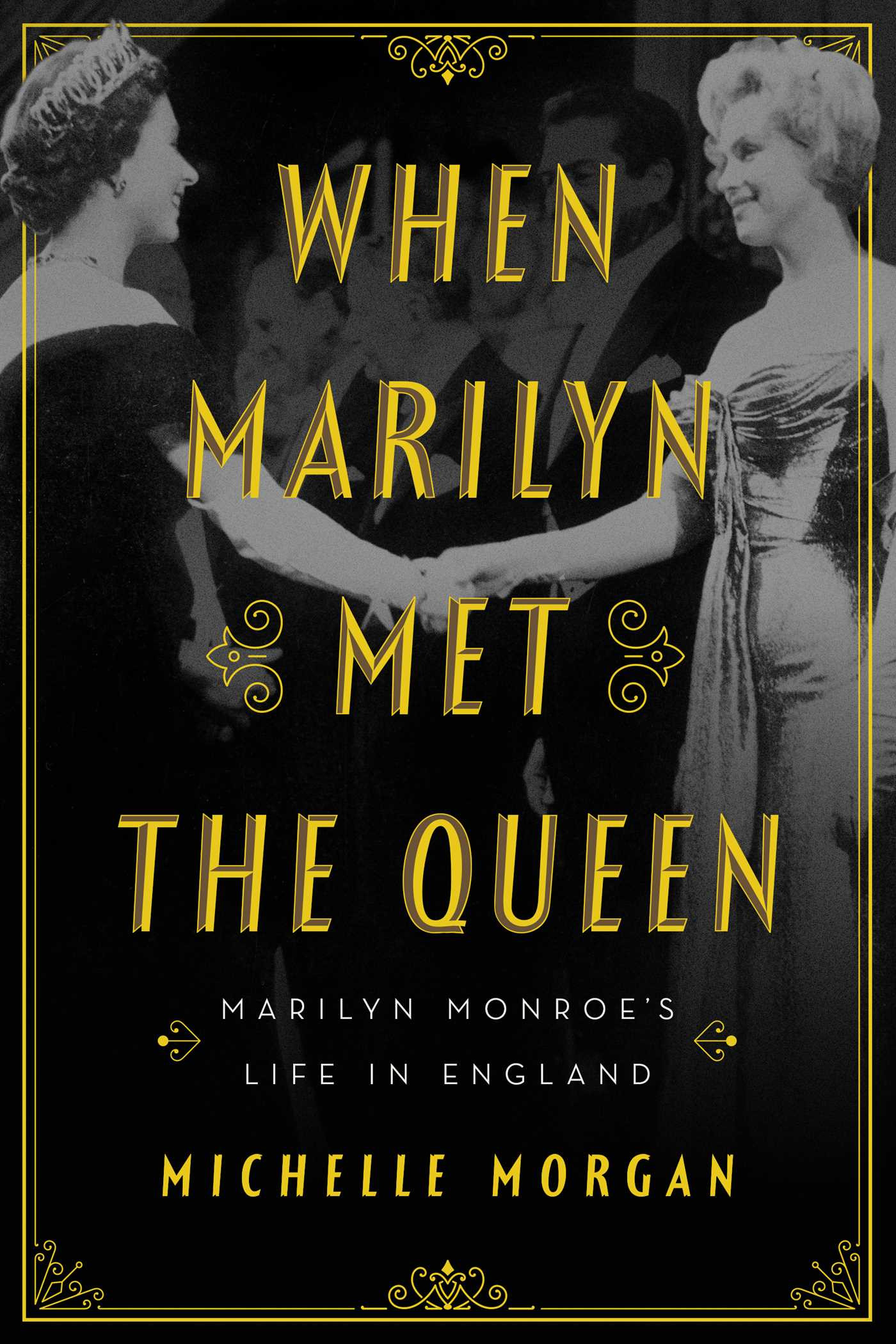
Hollywood bombshell Marilyn Monroe was neither the Queen’s subject nor a natural-born Englishwoman who could enjoy perks under Her Majesty. As a traveller who came over from the US to work in her first Trans-Atlantic feature film The Prince and the Showgirl, but ended up ruining the lives of her co-star and director Sir Laurence Olivier and damaging her own marital and mental life in the process.
If you are thinking that The Seven Year Itch actress had an affair with her co-star, then you are on the wrong track because according to this book, it was the cruel British tabloids, newspapers, and paparazzi that played the role of a villain here and kept making the guests uncomfortable, long before they did the same to their very own Princess of Wales, Diana. It was because of them that Monroe was a shadow of herself and even though she made friends during her stay in England, the list of foes was far greater.
According to this well-researched book, it was July 1956 when Monroe arrived in London to make The Prince and the Showgirl soon after marrying the renowned playwright, Arthur Miller. It wouldn’t be incorrect to say that on a trip that could have substituted for her honeymoon, the beautiful actress spent four woeful months in the country. Before she set foot in the UK, her temporary residence had to be shifted because of security concerns, as well as to defeat the tabloids who knew very well how to extract information, from whom, and at what price.
"I am dying to walk bare-headed in the rain. I think England sounds adorable,” said Monroe.
During a trip that should have concluded in happier circumstances, Monroe felt herself being watched in the mansion that was eventually selected for her, where servants were in the business of selling stories to the papers. And if that doesn’t seem bad enough, just imagine that the person she was acting side by side with and who was the director of her home production ― Sir Laurence Olivier ― hated his leading lady, and the feeling was mutual in the case of the actress.


What this book does best is present the facts to the readers so that they are the judge, jury, and executioner who could give the verdict as to who was the villain in the off-screen story of The Prince and the Showgirl. Was Monroe’s constant companion and acting coach Paula Strasberg the reason why she couldn’t get along with her director, was Sir Laurence Olivier’s own personal issues a hindrance in welcoming her producer from another continent, or was it the frequently hostile British press that ensured that Monroe’s tour to their country was labelled as a disaster? Read the book and you will know.
And then there was the public some of whom were ecstatic about finding the popular actress amongst themselves, especially when she took bike rides in Windsor Great Park. It was at this venue that Monroe decided to ensure that she gets to meet Queen Elizabeth who in her opinion was a fascinating woman and someone whom she should meet. But meeting the Queen was no ordinary task and Monroe had to wait to get her wish fulfilled.
Although this book is titled When Marilyn Met the Queen ― Marilyn Monroe's Life in England, it covers the latter part more, and the former part less. Only one chapter discusses the real Queen’s meeting with the reel queen and that meeting too wasn’t exclusive enough, yet the buildup takes most of the pages. In the chapters preceding and succeeding the historic meeting, the readers will get to know that there was more to Monroe’s life than meets the eye and it wouldn’t be incorrect to say that the England trip was one of the reasons why her career and life both went downhill.
“England? It seemed to be raining the whole time ... Or maybe it was me,” said Monroe.
What else would happen if your business partner wasn’t up to the task; if members of your team were leaking secrets to the newspapers; and if the producer herself wasn’t on the set most of the time? Monroe couldn’t have imagined that her fun trip would turn into a disaster when she must have entered the legendary Pinewood Studios because her director didn’t listen to any kind of advice about how to handle the filmstar, ridiculed her acting skills whenever he had the chance and dismissed her stage-fright as an inconvenience. If any director in the world does that to an actress, she would either leave the film or have him changed, but Monroe tried to keep a brave face and faced her issues which resulted in the film’s failure.
One must commend Morgan’s resilience who mentions in her introduction that while Monroe’s trip to England was only four months long, her quest to find out what really happened on the tour took three decades. She takes no sides while talking about the troubled marital life of Arthur Miller and Monroe, neither does she sympathise with the British press who were out to get the Hollywood actress from the moment they set eyes on her.
Monroe repeatedly ditched her security detail to feel like a normal person even if just for a few minutes. How people with whom she interacted still remember her and how they felt when they heard about her sudden death just six years after winning their hearts, get your hands on this book, which also offers an insight into Arthur Miller’s mind and how he felt being married to the most famous and beautiful woman of his era.
Even though the book is filled with pictures from Monroe’s trip to England, the images don’t highlight the feelings of the subjects, for instance when Queen Elizabeth shook hands with the Hollywood actress and inquired about her trip, her stay, and her film. Even though the writer wasn’t there when it happened, she tells it in such a way that the readers are transported into that time when the two women met, greeted and went their separate ways. The following are interesting excerpts from the chapter When Marilyn Met the Queen:
On Monday, October 29, 1956 — as the looming Suez Canal crisis dominated the headlines—Marilyn Monroe was to meet the Queen. When the day dawned, the actress was once again absent from the set of The Sleeping Prince, and while it is impossible to say if she had prior permission to have the day off, those keeping tabs on her timekeeping wrote down her absence as "Not available." It is doubtful that the movie even crossed Marilyn’s mind that day, as her full attention was on readying herself for the evening ahead. These preparations included hours of hairstyling with Gordon Bond, and then her make-up was applied. Lastly, it was time to slip into a gown that would make headlines around the country.
Officials may have instructed the female attendees to dress conservatively, but the dress Marilyn chose to wear when meeting Queen Elizabeth II was like nothing they had in mind. Made of gold lamé, the gown was so low-cut that the tops of Marilyn’s breasts were on full display. Tight to the body, with spaghetti straps and a fold of material meeting at the chest and heading down towards the floor, the dress came complete with a matching cape and bag.
Several staff were on hand to help Marilyn get into the gown, before she slipped on long gloves and platform sandals, similar to those worn at the premiere of A View from the Bridge. A quick spritz of perfume, and Marilyn grabbed her handbag and descended the stairs. The driver was waiting outside, and the smiling actress crunched her way over the gravel drive and climbed into the car, accompanied by Arthur Miller and Milton H. Greene.
… As the chauffeur pulled up outside London’s Empire Theatre, it was as though the entire population of Britain was gathered outside. It was a cold October evening and a biting wind blew its way around Leicester Square, but this didn’t stop fans from queuing for hours just for a glimpse of Marilyn, the Queen, and an abundance of other famous folk. Dressed in winter coats, hats, and gloves, the crowds screamed and pushed forward, while policemen tried to hold them back. As Marilyn exited the car, a photographer swooped in and took a picture, looking down the front of her dress. He moved aside, and then the fans’ excitement reached fever pitch.
"Marilyn! Marilyn!" they chanted, and the smiling actress turned and waved to everyone who greeted her. By this time, she was having trouble keeping her cape on her shoulders, and she and Arthur spent some time adjusting it, before fighting their way through the crowds and into the theatre.
"The Queen is very warm-hearted. She radiates sweetness," were Monroe’s words after meeting her majesty.
Was Monroe’s meeting the Queen her proudest moment? The author disagrees because she mentions that not many were happy with the way the screen siren was dressed for the occasion, how she kept breaking the protocol for the Queen and her sister Princess Margaret and how her quest for meeting the Queen resulted in her film’s dismal box office returns.
This book wouldn’t have been possible had the author not met, and interviewed those whose lives were changed after meeting the woman of their dream, way back in the 1950s. The way she writes about Monroe in these pages makes you wonder whether history repeated itself when Diana got married into the Royal Family of Britain because the impact wasn’t too different.
Omair Alavi is a freelance contributor who writes about film, television, and popular culture. All facts and information are the sole responsibility of the writer




1731655243-0/BeFunky-collage-(61)1731655243-0-165x106.webp)


1731656720-0/Copy-of-Untitled-(44)1731656720-0-270x192.webp)
1731651715-0/Express-Tribune-(1)1731651715-0-270x192.webp)









COMMENTS
Comments are moderated and generally will be posted if they are on-topic and not abusive.
For more information, please see our Comments FAQ